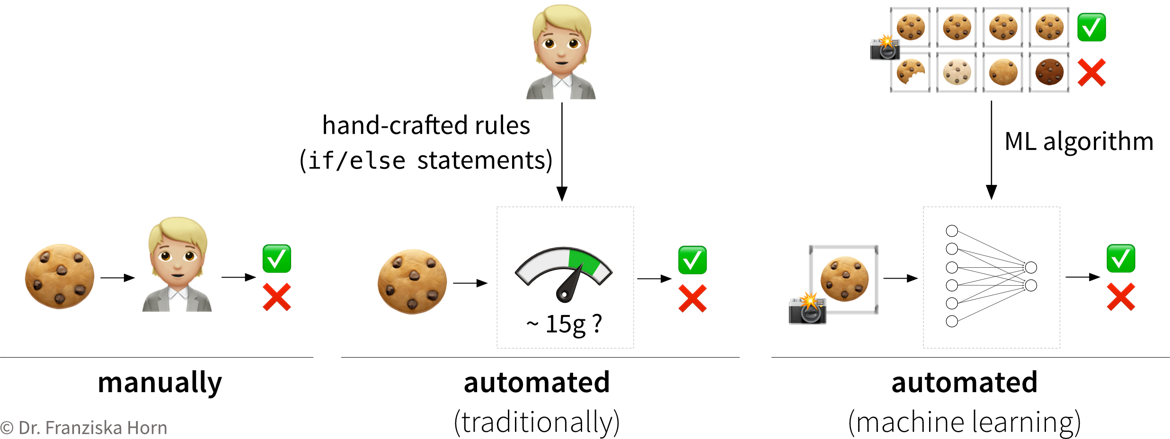What is ML?
OK, now what exactly is this machine learning that is already transforming all of our lives?
First of all, ML is an area of research in the field of theoretical computer science, i.e., at the intersection of mathematics and computer science:
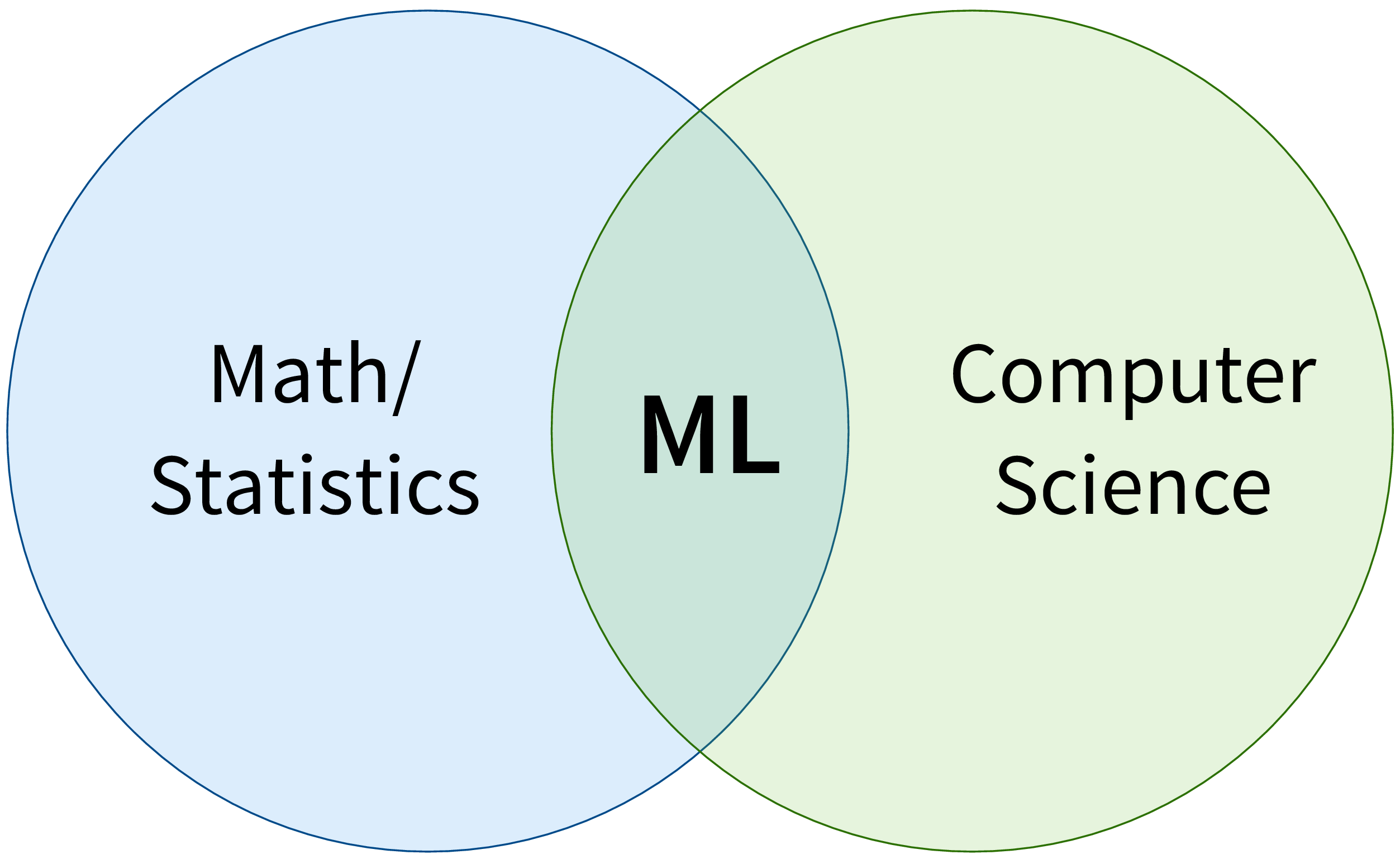
More specifically, machine learning is an umbrella term for algorithms that recognize patterns and learn rules from data.
| Simply speaking, an algorithm can be thought of as a strategy or recipe for solving a certain kind of problem. For example, there exist effective algorithms to find the shortest paths between two cities (e.g., used in Google Maps to give directions) or to solve scheduling problems, such as: “Which task should be done first and which task after that to finish all tasks before their respective deadlines and satisfy dependencies between the tasks.” Machine learning deals with the subset of algorithms that detect and make use of statistical regularities in a dataset to obtain specific results. |
We can think of the different ML algorithms as our ML toolbox:
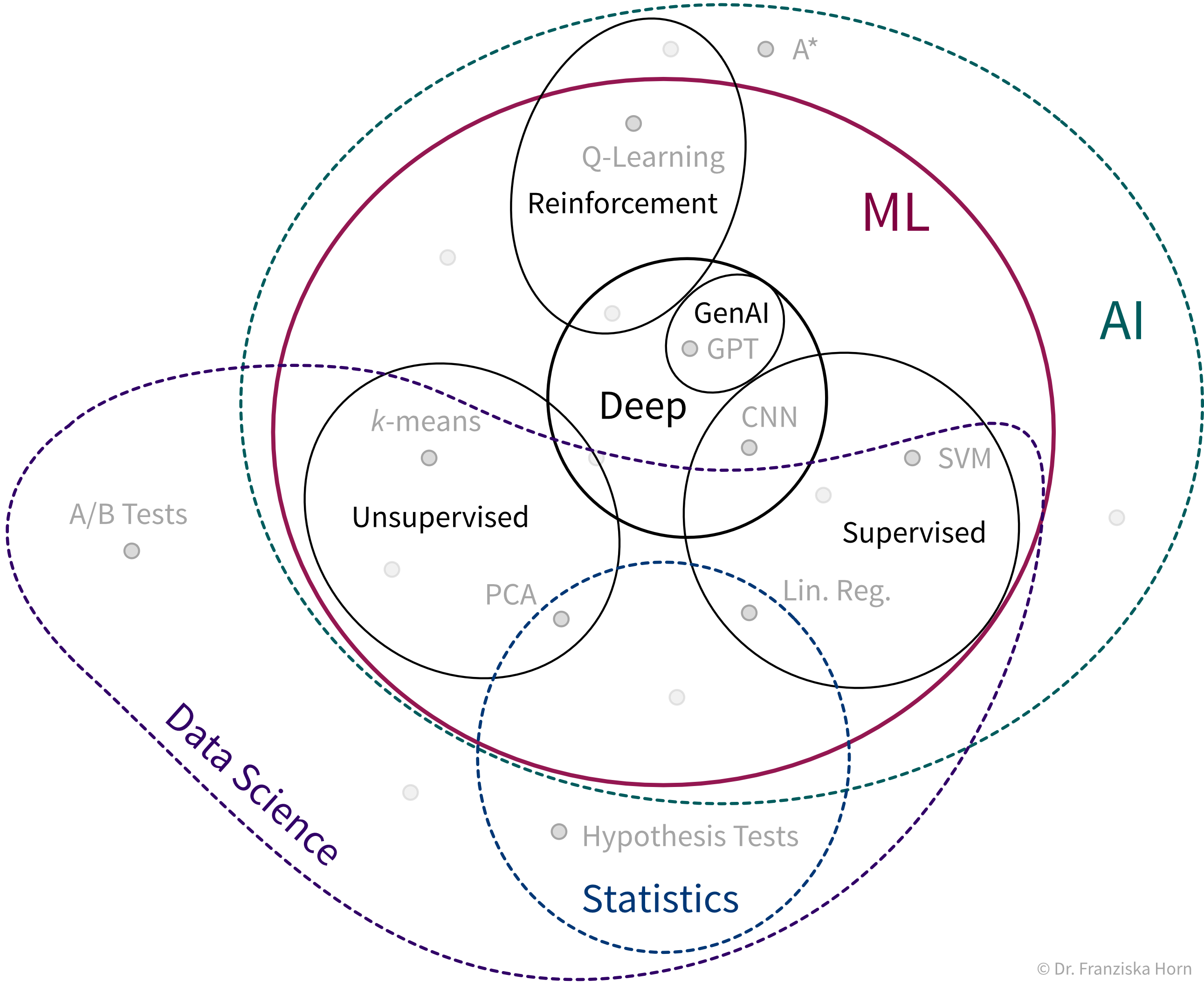
- ML algorithms solve “input → output” problems
-
What all of these ML algorithms have in common, is that they solve “input → output” problems like these:
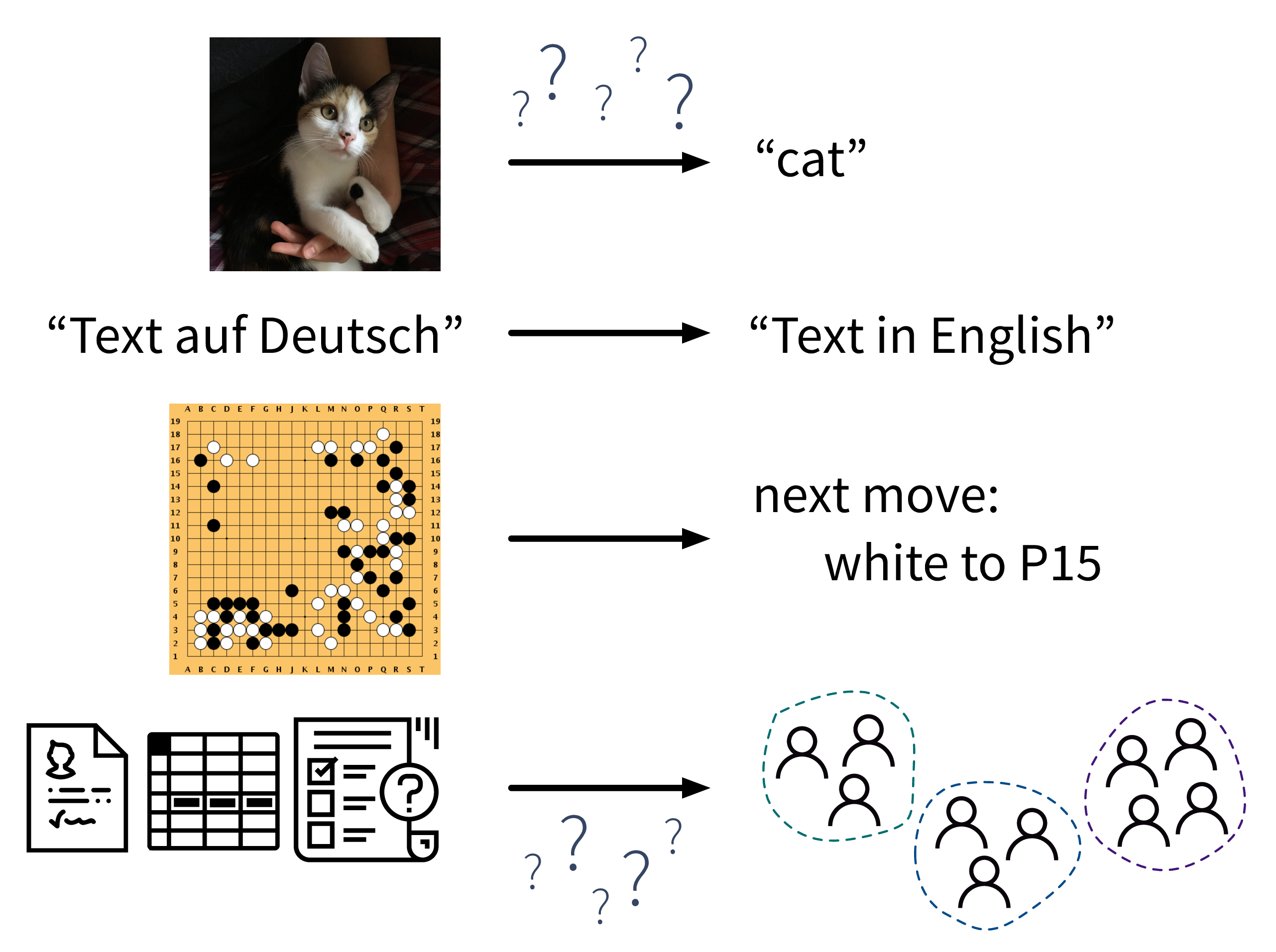
In the above examples, while a human (expert) could easily produce the correct output given the input (e.g., even a small child can recognize the cat in the first image), humans have a hard time describing how they arrived at the correct answer (e.g., how did you know that this is a cat (and not a small dog)? because of the pointy ears? the whiskers?). ML algorithms can learn such rules from the given data samples.
- Steps to identify a potential ML project
-
-
Create a process map: which steps are executed in the business process (flow of materials & information) and what data is collected where. For example, in a production process where some of the produced parts are defective:

-
Identify parts of the process that could either be automated with ML (e.g., straightforward, repetitive tasks otherwise done by humans) or in other ways improved by analyzing data (e.g., to understand root causes of a problem, to improve planning with what-if simulations, or to optimize the use of resources):
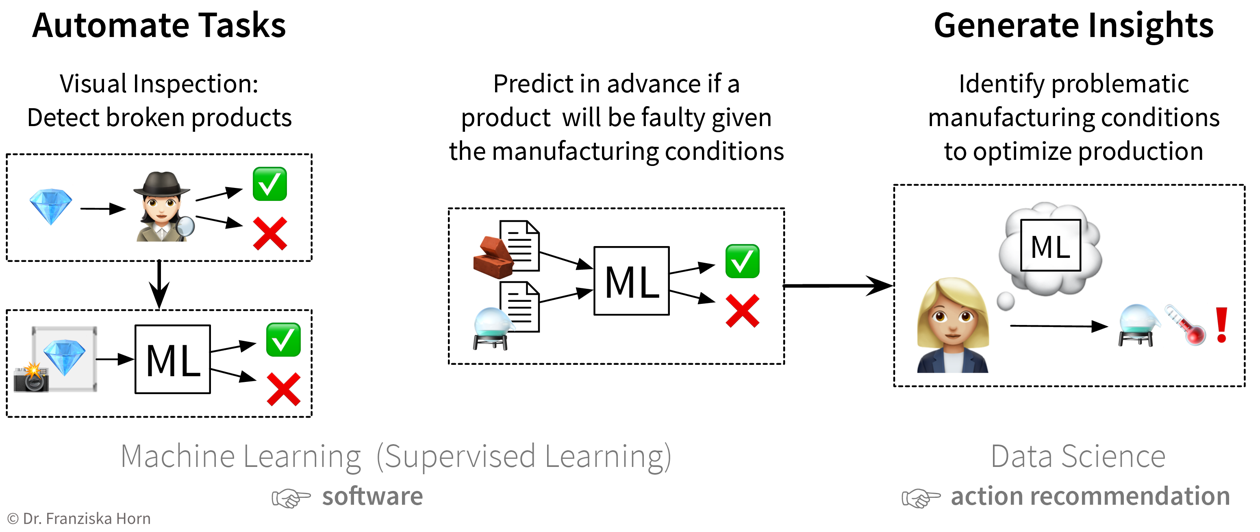 The first idea is to automate the quality check that was so far done by a human: since the human can easily recognize the defects in the pictures taken of the products, an ML model should be able to do this, too. The next idea is to try to predict in advance whether a product will be faulty or not based on the composition of raw materials and the proposed process conditions: success here is unclear, since the human experts are not sure whether all of the information necessary to determine if the product will be fine is contained in this data — but nevertheless it’s worth a try since this could save lots of resources. While the final ML model that solves the input-output problem can be deployed as software in the ongoing process, when a data scientist analyzes the results and interprets the model, she can additionally generate insights that can be translated into action recommendations.
The first idea is to automate the quality check that was so far done by a human: since the human can easily recognize the defects in the pictures taken of the products, an ML model should be able to do this, too. The next idea is to try to predict in advance whether a product will be faulty or not based on the composition of raw materials and the proposed process conditions: success here is unclear, since the human experts are not sure whether all of the information necessary to determine if the product will be fine is contained in this data — but nevertheless it’s worth a try since this could save lots of resources. While the final ML model that solves the input-output problem can be deployed as software in the ongoing process, when a data scientist analyzes the results and interprets the model, she can additionally generate insights that can be translated into action recommendations. -
Prioritize: which project will have a high impact, but at the same time also a good chance of success, i.e., should yield a high return on investment (ROI)? For example, using ML to automate a simple task is a comparatively low risk investment, but might cause some assembly-line workers to loose their jobs. In contrast, identifying the root causes of why a production process results in 10% scrap could save millions, but it is not clear from the start that such an analysis will yield useful results, since the collected data on the process conditions might not contain all the needed information.
-

